Mary Hall Daniels erected her final home in Hilliard, Fla., just the way she liked it. Three bedrooms, two baths, encased in light brown brick with a miniature palm tree out front. There was a metal carport in the back for her sturdy Dodge Intrepid and plush red carpet on the inside, evoking a cozy church like the one she attended every Sunday and Wednesday two miles down the road. She watched her soaps on a small TV in the laundry room next to the kitchen and collected stuffed animals in one of the guest rooms. She tended the yard herself, manning a riding lawn mower in weathered work boots and a bright green baseball cap until she was 90 years old. The house was hers, and no one could take it from her. Not again.
She’d built it in a one-stoplight town near Jacksonville at a cost of nearly $100,000. It was a hefty price for a woman who was living off a modest retirement from her job as a nursing assistant and from Social Security payments. But by the time the thick red carpet indoors was laid in the year 2000, Daniels had already paid off the entire bill. Six years earlier, she was awarded $150,000 by the state of Florida because of what had happened to her very first house, in an obscure rural hamlet called Rosewood.
In 1923, when Daniels was 3 years old, a white mob burned down the mostly Black enclave after a white woman in a nearby town of Sumner said she had been assaulted by a Black assailant. On a cold January night, Daniels and dozens of other Black Rosewood residents fled their homes into the central Florida swamps as armed white men bore down on their community. “We didn’t have no clothes, no shoes, no nothing,” Daniels recalled decades later. From the time she was whisked from her bed until she died in 2018 as the last known survivor of the attack, Daniels never again stepped foot in Rosewood.
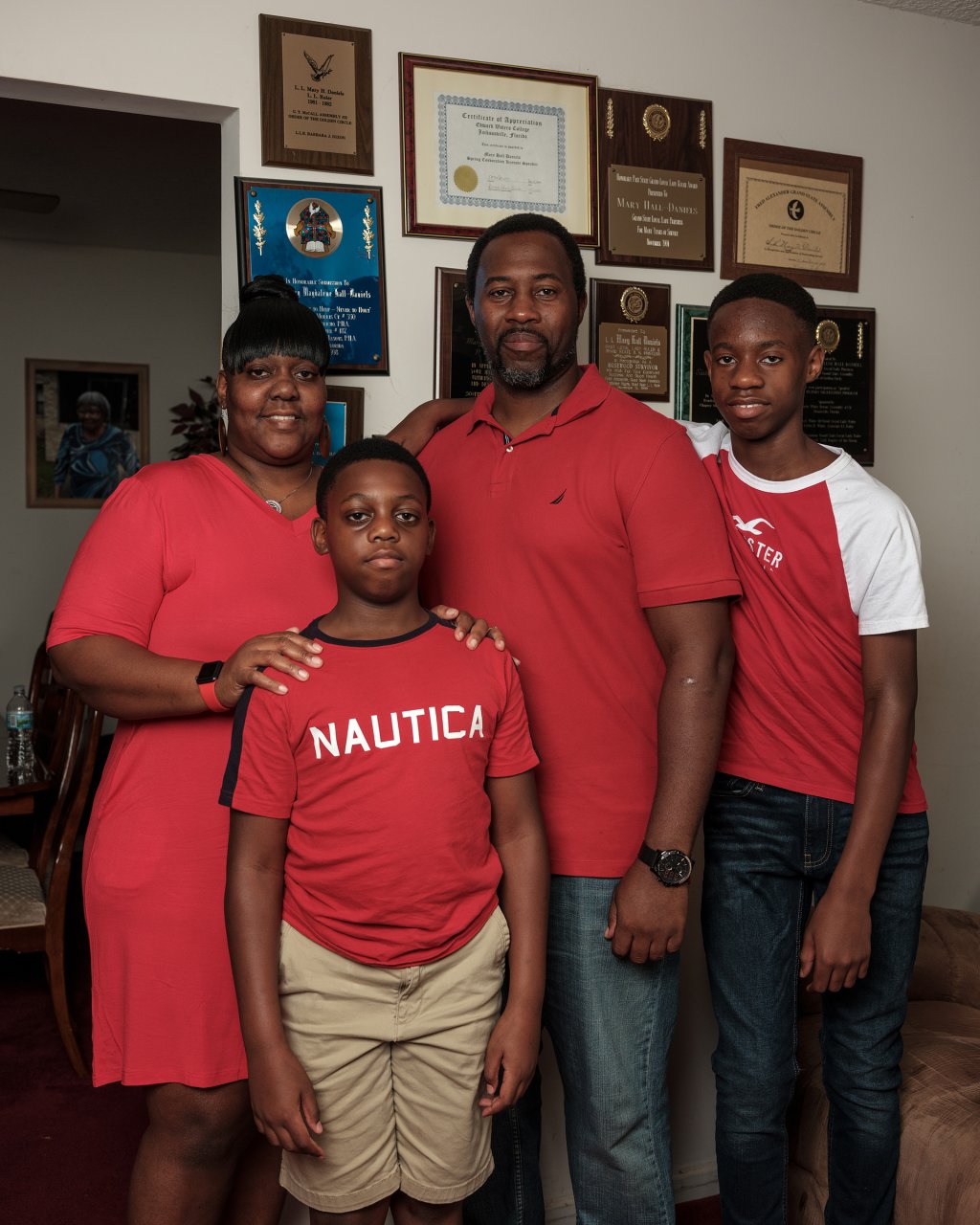

The story of the Rosewood massacre would lie dormant for decades, until a small group of living witnesses, aided by their media-savvy descendants and a powerful law firm, persuaded the Florida state legislature to award direct cash payments to nine survivors of the event. Descendants of those survivors also received money, in the form of small cash sums and college scholarships. Though politicians carefully avoided using the term reparations, the legislation represented the first time in modern U.S. history that a government not only acknowledged its role in the centuries of systemic racism, violence and economic harm toward African Americans, but also compensated them for it. “I remember Mama saying, ‘Finally, we’re going to get something for our property that my mom and dad had that they took from us,’” says Daniels’ daughter, Alzada Harrell.
Rosewood was one of many incidents in which white mobs, from Washington, D.C., to Tulsa, Okla., violently attacked and destroyed Black communities in the years after World War I. Such vicious acts of terrorism have never fit neatly into the arc of racial progress that America markets as history. But the usual order of things has been upended by the killing of George Floyd and the summer of fiery protest that followed. People have taken to the streets demanding not only the end of police violence that steals Black lives but also the beginning of economic policies that restore Black livelihoods. Calls for reparations have extended across long distances and targeted injustices across even longer time frames: from the arrival of enslaved people on colonial shores in 1619 Virginia to the unfair treatment of Black home-owners seeking mortgages in 2018 Chicago. The collective memory of the people is finally catching up to the institutional memory of the state. And greater historical knowledge is driving more Americans toward a simple conclusion: there’s a debt to be paid.
The Rosewood case was a single, arduous effort to repay a sliver of that debt. The surprising success of the Florida case could offer a model for a new generation seeking justice for historical wrongs—though that assumes a consensus exists about the best way such an effort might proceed. Among people who support reparations, many want Congress to enact a comprehensive federal policy. A patchwork of state reparation laws and initiatives could distract from that approach. And some communities are seeking redress through the courts rather than legislation—perhaps discouraged by the politics of the issue: nationally, support for reparations is starkly divided along racial lines. While 72% of African Americans believe the federal government should compensate Black people whose ancestors were enslaved, only 14% of whites support such a measure, according to an ABC News/Ipsos poll.
But paying the Rosewood victims was itself seen as a radical long shot before it actually happened. When the Florida state senate finally passed the bill in the spring of 1994, the survivors didn’t thank the lawyers or the legislators first—they thanked God. Their stories of childhood terror and lost opportunities as adults had moved the government to try to atone, however late. This is the basic calculus of any reparation claim, which must feed the deeply personal traumas of America’s racist past into the grinding bureaucracy of present-day courtrooms, capitol buildings and city-council chambers. Mary Hall Daniels and the other Rosewood families have already done the work; the rest of the nation may finally be ready to follow their lead.

Rosewood was a small glimmer of Black independence in the shadow of the Jim Crow South. In the 1910s, Black entrepreneurs there operated a sugar-cane mill, a turpentine distillery and at least two general stores. By 1923, the community had seen better days but was still a peaceful enclave of about 120 people. Many residents were employed at the sawmill in the nearby town of Sumner or served as domestic workers for its white residents. Others farmed or trapped, catching and selling wild animals. Though their homes spread out far among the dense pine trees and Spanish moss of rural Florida, Rosewood residents took pride in their three churches, school, Masonic lodge and amateur baseball team.
It was in Sumner that the trouble started. On the morning of Jan. 1, 1923, a white woman named Fannie Taylor came running out of her house in a panic, claiming that she had just been assaulted by an unknown Black man who’d escaped through her back door. News emerged that a Black convict was on the loose. White men of Sumner quickly formed an armed search party with bloodhounds and set out for Rosewood.
Over the course of the next week, an ebb and flow of intense violence would rack Rosewood as white people sought Fannie Taylor’s alleged assailant. When an African-American blacksmith named Sam Carter couldn’t answer the white men’s questions to their satisfaction, the posse shot Carter at point-blank range and hanged him from a tree. Another Black Rosewood resident, Aaron Carrier, barely escaped a lynching. As rumors of a mysterious Black attacker spread, white people from surrounding towns poured into the region, forming a lawless mob that numbered more than 100. Ku Klux Klan members were likely in their ranks—the hate group had held a large rally in nearby Gainesville on New Year’s Day.
The manhunt reached a crescendo on the night of Jan. 4, when members of the mob attempted to forcibly enter the home of Sarah Carrier, a Rosewood matriarch who worked as a domestic servant in Sumner. Sarah’s son Sylvester, armed with a shotgun, was protecting the house. When men attempted to kick down the front door, Sylvester shot and killed two.
The Carrier house was burned to the ground, and Sarah and Sylvester were later found dead inside. The pretense of seeking justice for Fannie Taylor was replaced with a wrathful desire for revenge for the killing of two white men. Over the next two days, the churches, the Mason hall and the houses of Rosewood would all be enveloped in flames. A woman named Lexie Gordon, who was trying to escape her burning home, was shot to death by white attackers. All told, the Rosewood atrocity would end with an official count of at least six Black people and two white people dead, though descendants of Rosewood families have claimed as many as 37 people were killed or missing.
The Black folks who survived were left with battered souls and shattered livelihoods. Mary Hall Daniels’ family moved to Gainesville, where her mother cooked in white people’s kitchens. The abundance of their Rosewood farm was gone forever—Mary had to put aside an interest in music because the family couldn’t afford the 25¢ lessons. Her older brother Wilson recalled the three-room shack they crammed into in Gainesville, a far cry from their former two-story home. But it was more than financial security that had been taken. Mary’s older sister Margie was skittish around white people the rest of her life. And Mary, whose father died when she was a baby, always ached for the pictures of him that had been lost in the blaze. “I don’t know my daddy,” she said decades later. “I don’t even know how he looked.”
While Daniels’ family eventually migrated to Hilliard, many of the Rosewood survivors ended up in Lacoochee, a small town near Tampa where the mill that had employed many Black workers in Sumner was relocated. There, a rigid set of rules emerged dictating that the horrors of Rosewood could be discussed only at the discretion of family elders. “It was fear and protection,” Arnett Doctor, a great-grandson of Sarah Carrier’s, would later recall. “That mob that ravaged Rosewood as they did, many of those people were still alive, and my mother was aware of them by name.”
Doctor learned about what had happened in Rosewood from relatives as a small boy in the late 1940s. For Alzada Harrell, in Hilliard, her aunt Margie broached the topic when she was a teenager in the 1970s. No one who had experienced the terror wanted to dwell on it. But in the 1980s, Doctor began quietly compiling information about Rosewood—not just the stories passed down by his elders but also land deeds, birth certificates and tax records. In 1982, an investigative journalist named Gary Moore published the first modern account of the Rosewood incident in the St. Petersburg Times. (Moore in 2015 published Rosewood: The Full Story, an exhaustive account of the many uncovered facts and myths tied to the massacre.) The next year, the story of Rosewood was beamed into homes nationwide on 60 Minutes. The prominent news coverage helped push the families to start organizing an annual reunion in Lacoochee.
Rosewood was no longer a secret. Eventually, its victims would advocate for something their counterparts in Tulsa, Washington and dozens of other sites of racial horror never received: justice.
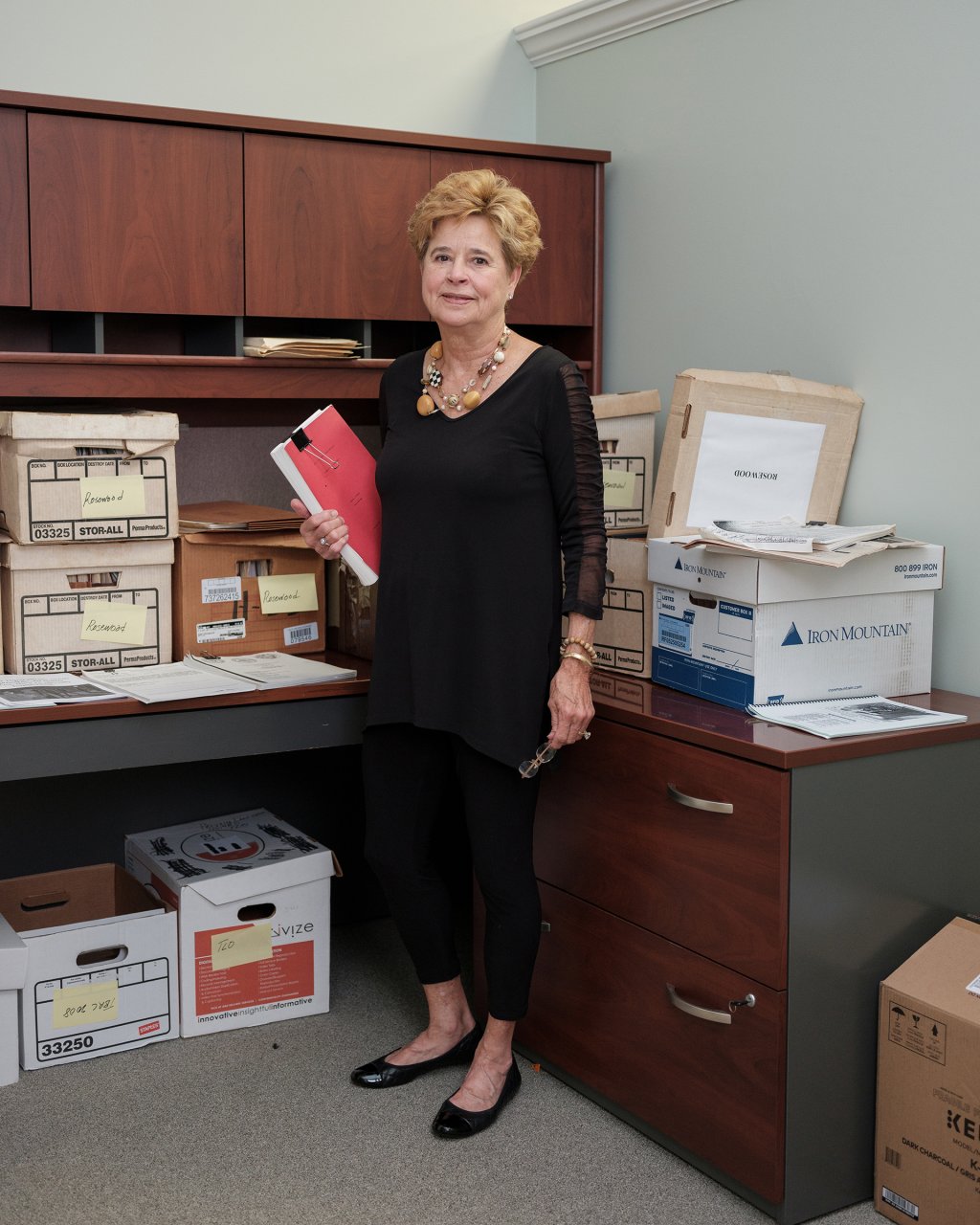
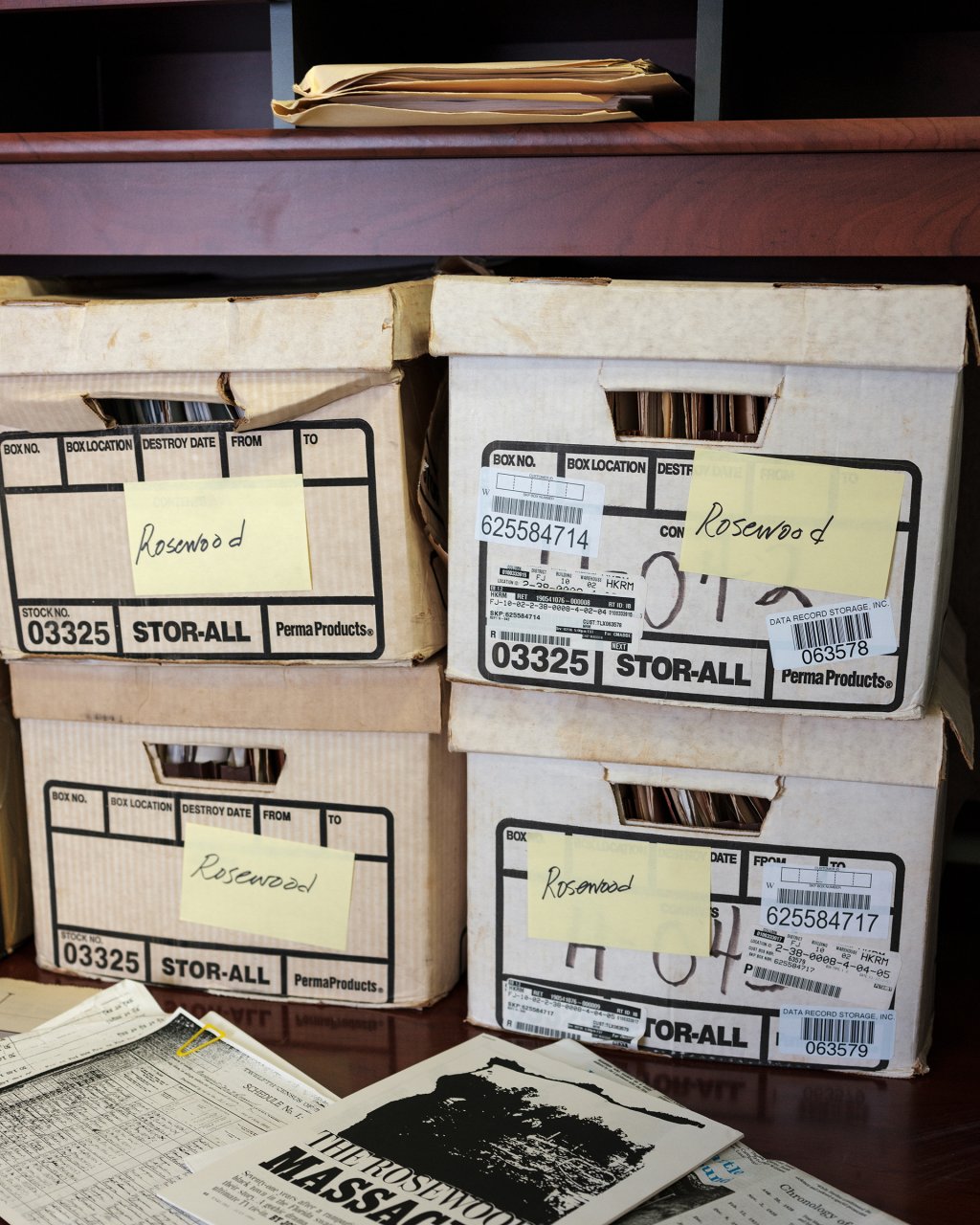
The argument for Rosewood reparations hinged not on the reckless acts of a nameless mob, but on the government officials who refused to stop it. On New Year’s Day, 1923, when Sam Carter was being lynched, Levy County deputy sheriff Clarence Williams did nothing to intervene. The coroner ruled Carter’s killing “death by unknown hands,” though a crowd of at least two dozen men had been present to witness the murder. Sheriff Robert Walker declined to request that Florida Governor Cary Hardee send in the National Guard as violence escalated. After the killing was over, a grand jury returned no indictments.
“The state did nothing, even after Rosewood burned, to go in and protect that property for the owners,” says Martha Barnett, one of the lawyers who represented the Rosewood families in the reparations push. “We made the argument that the obligation of the state to do that existed the night Rosewood burned, it existed the week after Rosewood burned, and it existed 70 years later.”
In 1992, when the law firm Holland and Knight took up the Rosewood case as a signature effort of its pro bono division, Barnett was a corporate lobbyist well known in the halls of the Florida statehouse. Her typical clients included IBM and Pepsi. But Holland and Knight quickly realized that a case advocating for the Rosewood survivors would be much easier to build in the capitol building than in the courthouse. In a civil trial against the state, witness memories might be dismissed as hearsay. The statute of limitations would also make it difficult for the law to reach so far back in time. This was a cruel wrinkle of a justice system that was only beginning to grapple with the human-rights violations it had legally sanctioned before the civil rights movement. “We had death and injury, but we didn’t have a judgment,” Barnett says.
In the legislature, there was a clearer path to restitution. Holland and Knight could file an equitable-claims bill, arguing that the state government had injured the families of Rosewood and had a moral obligation to compensate them, regardless of whether there was an explicit legal one. If enough legislators agreed, a hearing would be convened. Holland and Knight would be able to call witnesses and present evidence. The state, represented by the attorney general, would be able to cross-examine them. An official known as the special master, similar to a judge, would advise the legislature on whether the bill should be passed. “It’s kind of like a mini-trial in a legislative arena,” Barnett says.
At first, there was little appetite among legislators for a bill that was seen as politically risky and racially divisive. Even among Black members of the state government, there was skepticism. Eventually, the Rosewood families found key allies in Al Lawson and Miguel de Grandy. The bill’s two co-sponsors brought together several factions that might traditionally be at odds: Democrats and Republicans, African Americans and Hispanics, North Floridians and South Floridians.
The initial version of the bill leaned heavily on the moral imperative to atone for the sins of the past, remarking that “the inhabitants of Rosewood were hunted like animals.” It called for an unspecified sum of money for an unspecified number of massacre victims. The bill was never heard on the floor of the Florida house of representatives. “It was a huge flop,” recalls Barnett, who tracked down nearly every legislator to pitch the bill face-to-face. “Most people said, ‘It’s been 70 years. It’s a terrible story. It’s an awful chapter in the history of our state, but we didn’t do it.’”
There, again, was the cruel wrinkle of a flawed justice system. Because the state had waited so long to answer for Rosewood, legislators argued that any debt owed to survivors should simply be wiped from the moral ledger. It was hardly a new talking point. When enslaved people were freed after the Civil War, they had reason to expect that the government would grant them land as delayed payment for generations of labor exploitation. The phrase 40 acres and a mule derives from General William T. Sherman’s 1865 field order to distribute 400,000 acres of land to newly freed Black families in 40-acre plots. Instead, government officials insisted that compensating Black people was a practical impossibility. After a formerly enslaved woman named Callie House helped launch a national campaign demanding pensions for her fellow freedmen, the commissioner of the U.S. Bureau of Pensions said in 1902 that “reparation for historical wrongs” was a false hope that would be “followed by inevitable disappointment, and probably distrust of the dominant race and of the Government.”
In Florida, the lawyers and legislators hoped additional facts and a sharper legal argument would overcome a century’s worth of anti-reparation rhetoric. The bill’s backers persuaded the legislature to commission a report from several prominent Florida academics that would provide a factual account of the events at Rosewood. In the meantime, Doctor was talking up their story in the press.
Everyone involved carefully avoided using the word reparations, even though both Doctor and Holland and Knight had closely examined a reparation law from 1988, in which Congress awarded $20,000 to each Japanese American who was forced into an internment camp during World War II. Instead, the key concept became property rights, the notion that the government has a duty to protect any citizen’s land, regardless of race. The framing struck a chord with some Republicans and provided some amount of political cover for legislators who feared wading into the reparations debate. “They would ask me, ‘Al, does this have anything to do with race?’” says Lawson, now a Congressman representing North Florida. “I said, ‘No, it’s about property value. You can vote for this.’”
Lawson and de Grandy brought a revised bill in 1994, which dialed back the language decrying racism. It called for $7 million in payments to a specific list of Rosewood victims and their descendants, including $270,000 for each person who had survived the attack itself. With skeptical legislators at least somewhat convinced, and press coverage around the globe, a special legislative hearing was organized in February and March of 1994.
One after another, Rosewood’s elderly survivors traveled to the Florida capitol in order to paint vivid pictures of the trauma they’d endured as children. Arnett Goins recalled seeing the bodies of the two white men who had tried to enter Sarah Carrier’s home splayed out in the living room. From the second floor of his home, Wilson Hall could see the flames dancing from other houses in the area before his family were forced to flee their own. Minnie Lee Langley, the lead witness, recalled how bitterly cold it was in the swamps as they huddled by a fire, waiting for a train that would rescue women and children (but not men). “We stayed out there three days and three nights out there in the woods,” she said at the hearing. “It hurt me.”
Crucially, the Rosewood case had something investigations into Jim Crow crimes often don’t. Earnest Parham, a white man who had been an 18-year-old store clerk at the time of the massacre, testified that he had witnessed the killing of Sam Carter. “It was almost as if the state needed a white person to corroborate what the Black residents of Rosewood were saying,” says Maxine Jones, a history professor at Florida State University who led research for the state legislature’s report.
Special master Richard Hixson, acknowledging that the Rosewood case wouldn’t pass muster in a court of law, appealed to the “moral obligations of the state.” He recommended that the legislature award $150,000 to each survivor. The legislature quickly abided, passing the bill in both chambers by comfortable margins. Rosewood family members hugged and wept. A 10-year-old descendant named Benea Ousley read a family poem, “The Rosewood Story,” on the capitol steps. Within five months the Office of the Comptroller in the state of Florida began issuing checks to Minnie Lee Langley, the Hall siblings and the other survivors. Reparations were real.
The Rosewood money was divided into three pots: the $150,000 lump sum for each of the nine survivors; a $500,000 pool of funds for their descendants; and individual $4,000 scholarships for the youngest generation of Rosewood family members. The total payment was $2.1 million, significantly less than the initial request of $7 million—but, crucially, something to build on.
For many Black households, financial precarity is a way of life, especially for those who don’t own homes that can be borrowed against. In the U.S., for every dollar of wealth held by a median white family, a Black family has just 10¢. This wealth gap was formed by the beams and trusses of structural racism over the course of centuries. Black people were barred from accessing the best jobs after Reconstruction, refused bank loans for suburban homes after the New Deal, and in particularly vivid cases, run off their own property by unruly white mobs throughout the early 20th century. The chasm in prosperity that emerged from these acts naturally argues for material recompense.
Generational wealth, however, is easier to start building early in life rather than at its end. While Mary Hall Daniels was able to buy a new home, for many of the Rosewood survivors, the money offered small comforts in life’s twilight: a sturdier roof, a new car, a big-screen TV. Much of the money was eaten up by unforeseen expenses: higher medical bills because the boost in income disqualified a survivor from Medicaid, or a new home-security system to guard against the perpetual fear that someone would try to finish what the mob in Rosewood had started. What was left arrived too late to be properly enjoyed by people whose lives had been transformed by white violence. “They didn’t get a chance to go on any big cruises and enjoy and have fun,” says Sherry DuPree, a historian for the Rosewood Heritage Foundation. “They had to pay money out to take care of their needs.”
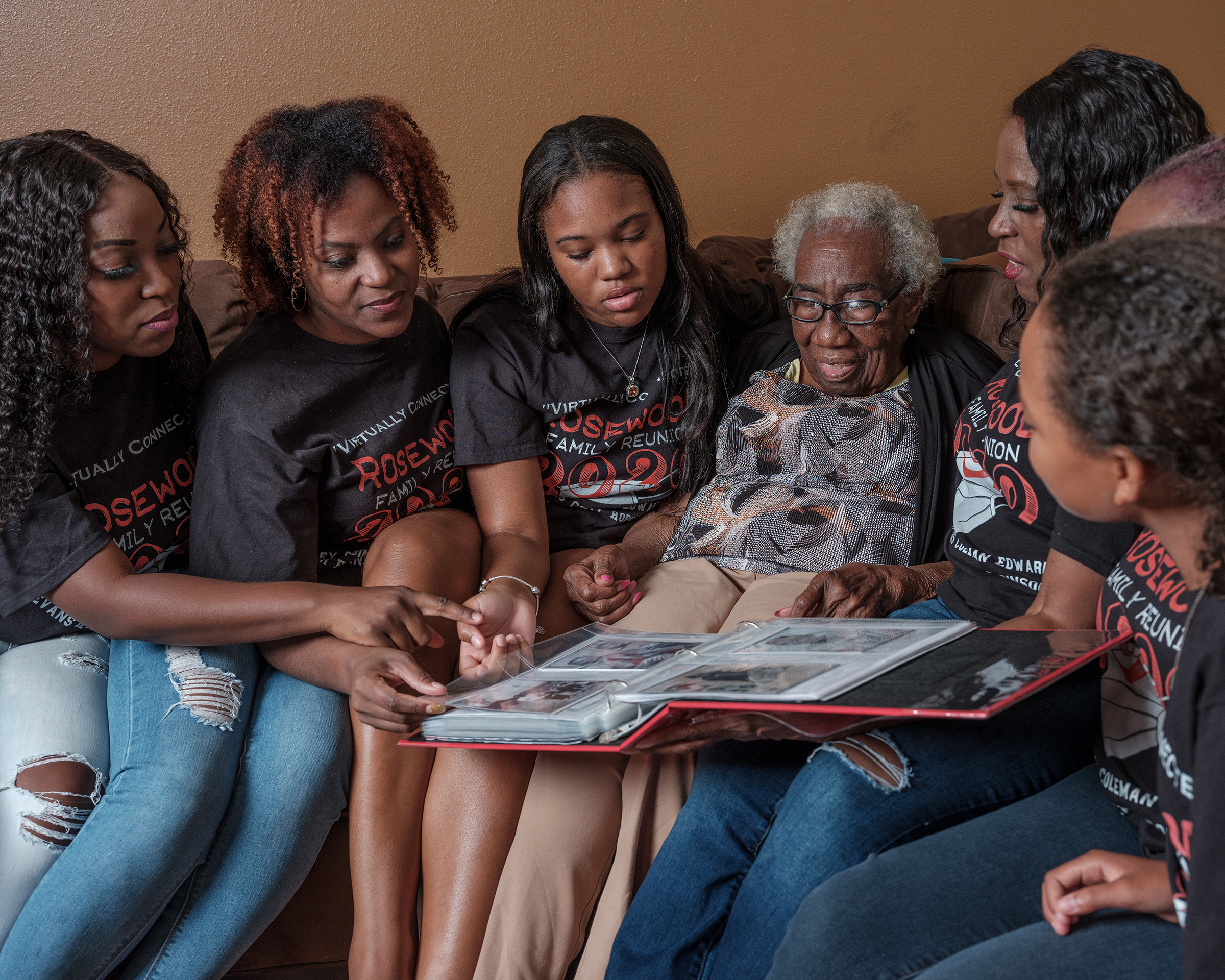
The money for descendants was divided among a number of sprawling family trees drafted by the attorney general’s office. It didn’t go far. Fewer than half of the claimants received more than $2,000, and some received only a few hundred dollars. The money offered opportunities for moments of joy—Altamese Wrispus, one of the oldest descendants still living, spent her $3,000 on her niece’s wedding—but hardly enough to transform a life. However, it did establish a precedent for providing direct cash payments to descendants of people who suffered property loss due to acts of racial terror.
The Rosewood legacy lives on today primarily through the scholarships. So far, 297 descendants have received help paying for school, according to the Washington Post. If not for the Rosewood bill, Carlous Hall might not have finished college. A grandson of Mary Hall Daniels’, who now lives in her three-bedroom house in Hilliard with his wife and two sons, he doesn’t know if he would have had the money or motivation to complete a four-year degree on his own. But Hall enrolled at Bethune-Cookman University in 1997, using scholarship money allocated in the bill. “Without the scholarship, it would have been very hard for me to go to any four-year college,” he says. “There was no way I was gonna blow that chance, given the fact that I got a scholarship based on what happened to my grandmother back in the ’20s. That was a huge impact on my life.” He now teaches special education and history at Hilliard’s high school.
Ebony Pickett, another early scholarship recipient, was already in college at Florida A&M University when the reparation law was passed. The scholarship money gave Pickett the confidence and financial security to switch majors to occupational therapy during college. “I may have just settled for something I can do, not necessarily where my passion lies,” she says. “In that aspect, I’m truly grateful.”
Pickett’s two younger sisters—Benea Denson, who sang on the capitol steps when the Rosewood bill was passed, and Keri Miller—followed in her footsteps at Florida A&M, earning degrees in pharmacy and elementary education. While all three sisters appreciate the financial freedom the scholarship afforded them, they also recognize the opportunities lost by their ancestors. When I asked what form reparations might take in the future, Denson’s response was immediate: “Land. Building generational wealth. That’s what we lost with Rosewood.”
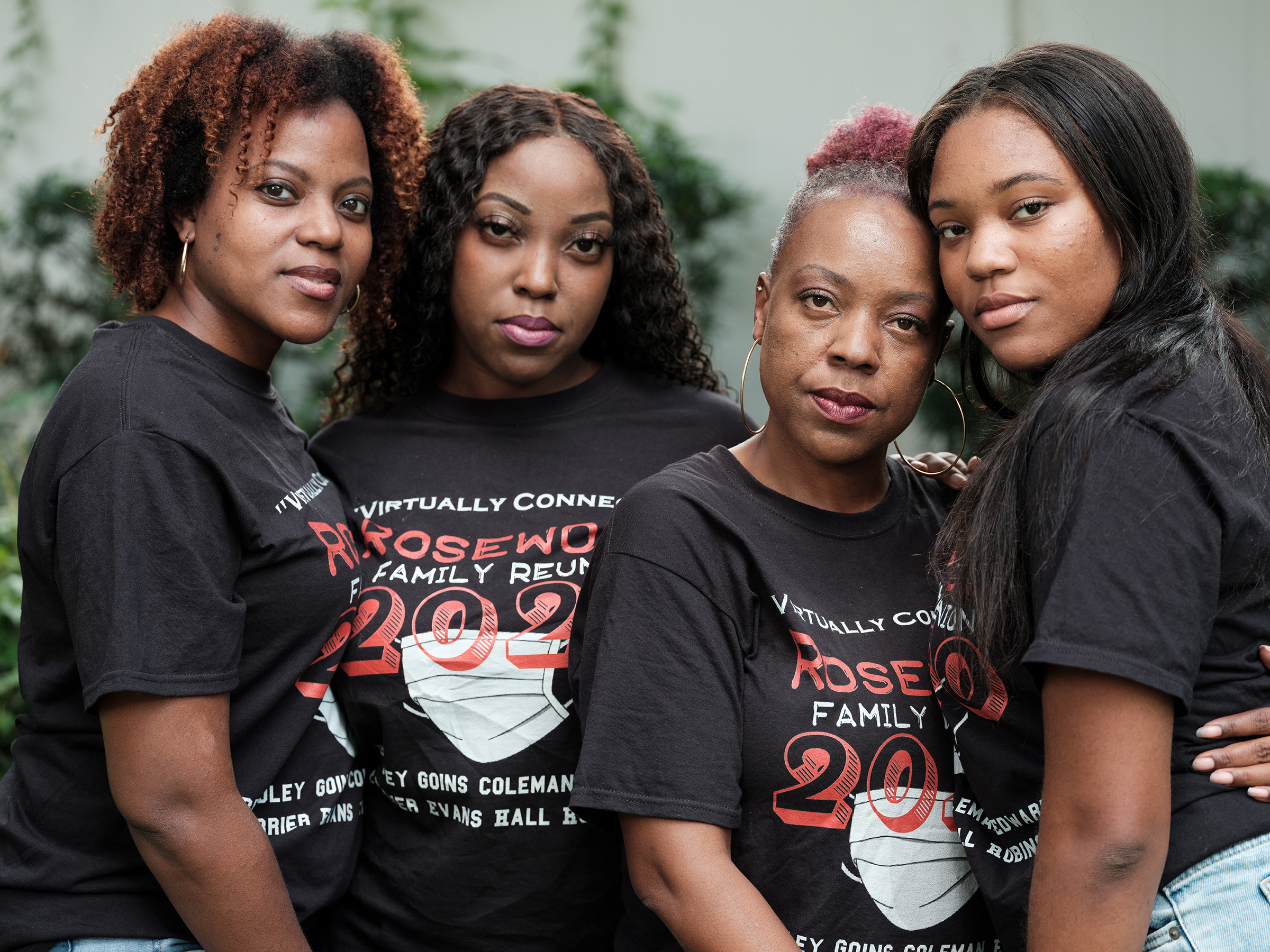
Last summer, Randolph Bracy, a Florida state senator, watched the U.S. congressional hearing on reparations from his district in Ocoee, Fla. Reparations had quickly gone from a moribund political topic to an issue advocated by Democratic presidential candidates. The debate was no longer just about slavery but also the misdeeds that came during and after the Jim Crow era. Maybe it’s time, Bracy thought.
Ocoee had its own buried history of shocking racial violence. On Election Day in 1920, a Black resident named Moses Norman had a confrontation with several white men when he protested being turned away at the polls. Norman fled to the home of a friend, July Perry, for safety, and in self-defense they killed two members of the white mob coming after them. Incensed white people proceeded to lynch Perry and burn 20 buildings in the Black district, possibly killing as many as 60 Black people. Soon every Black resident was run out of town.
“Rosewood set a precedent,” Bracy says. “How it was done in ’92 is what I tried to do.” He commissioned a study to establish the facts, began drumming up media attention and introduced a bill last fall that would provide up to $150,000 for descendants of former Ocoee residents.
Without the influence of well-heeled lobbyists or a Republican co-sponsor for his bill, Bracy’s measure stalled in Florida’s senate committees and was ultimately turned into an Ocoee education bill rather than a reparation one. His plans to start rallying public support for another reparation effort next year were scuttled by the onslaught of the coronavirus in March. But then the George Floyd protests erupted, and a dam holding back generations’ worth of frustration with American racism burst open.
Protesters took to the streets calling for the arrest of killer cops, the defunding of police departments, and reparations for Black people. “We have been taught in direct ways and in indirect ways to disregard, disrespect and to not value Black life,” says Shirley Weber, an assembly member in the California state legislature. “The Floyd case makes people sit up and say, ‘O.K., I know I may have been resistant to some of this stuff in the past, but maybe my resistance was uncalled for.’”
In June, the California state assembly passed a bill that would assemble a reparations task force to study the impact of slavery and later forms of discrimination on Black people in the state. The city council in Asheville, N.C., passed a similar ordinance in July, and the mayor of Providence, R.I., backed reparations the same month. Bracy now believes the drastic shift in the political environment will help financial reparations come to pass in Ocoee when he reintroduces the initiative next year.
Communities are also turning to the courts in order to seek redress. On Sept. 1, survivors of the 1921 Tulsa race massacre and their descendants filed a lawsuit against the city of Tulsa, which has never compensated victims of the brutal event in which white mobs burned down more than 1,200 homes and killed as many as 300 people. The case argues that local and state officials created a public nuisance by allowing the massacre to happen, sustained that nuisance over the course of generations through disinvestment from the Greenwood business district, and must now restore the neighborhood to the financial position it would have been in if not for the massacre. If successful, the case could set a new precedent for how the historical impacts of systemic racism are adjudicated. “We must have repair. We must have reparations. And we must have respect,” lead lawyer Damario Solomon-Simmons said.
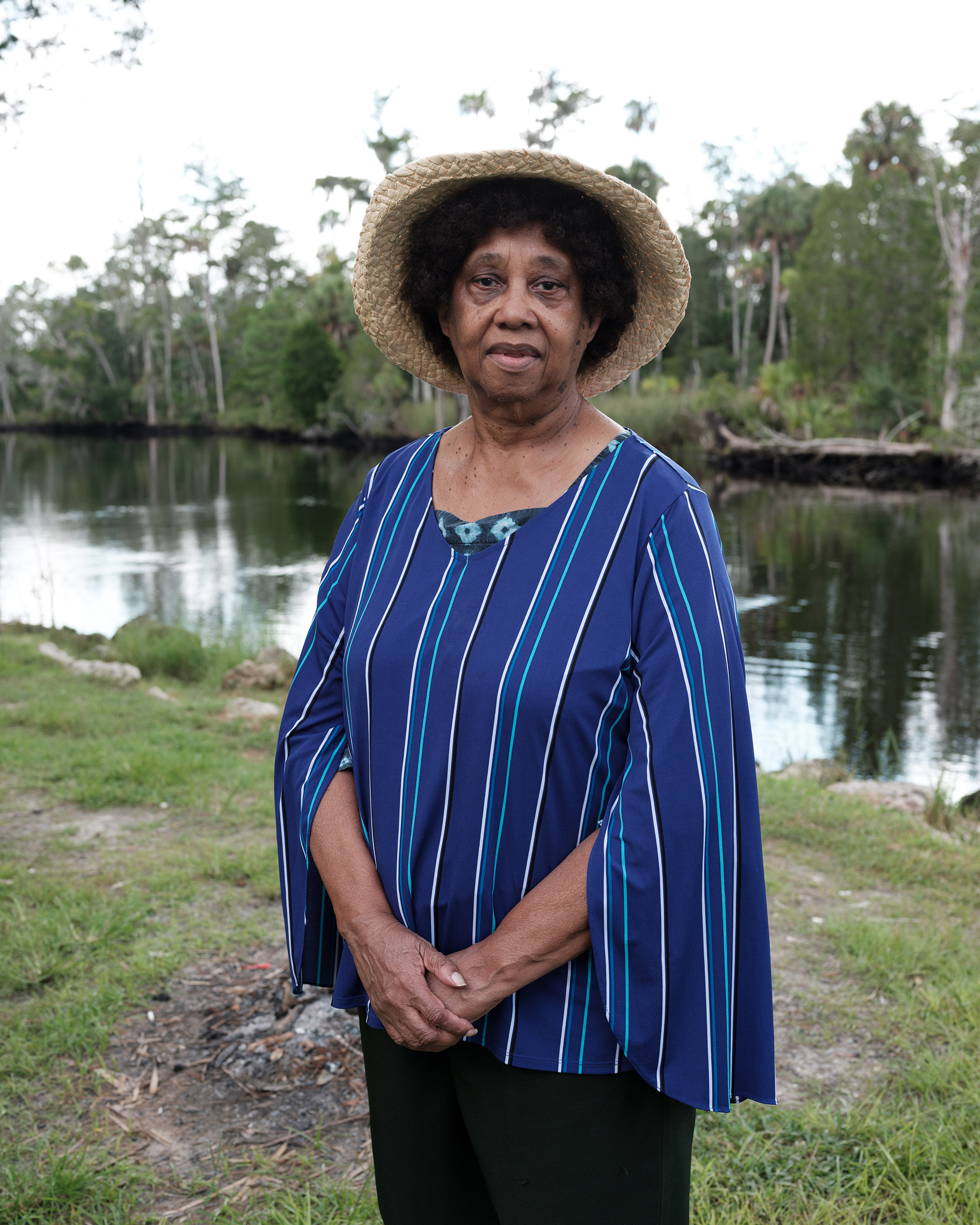
These disparate initiatives compelled professors at Columbia University and Howard University to form the African American Redress Network in June. The organization hopes to provide opportunities for local leaders nationwide to share strategies in current reparation campaigns. In the long term, the group may offer the logistical and financial resources that are necessary to grease the wheels of effective political movements, according to Justin Hansford, the director of the Thurgood Marshall Civil Rights Center at Howard. “At the end of the day, it was power and politics that got the bill across the finish line,” Hansford said, referring to Rosewood. “People have known reparations was the right thing to do for a long time, and nothing’s happened. But when the power dynamics shift, things happen.”
William Darity, a public-policy professor at Duke University, argues that people should reject piecemeal reparations as a matter of principle, since there’s no way they could come close to accounting for the economic harms brought on by enslavement, Jim Crow and modern racist practices. In a new book, From Here to Equality, he and co-author A. Kirsten Mullen propose that Congress enact a reparation program that would eliminate the racial wealth gap between Black people and white people. Such a program would cost $10 trillion to $12 trillion, which Darity and Mullen believe could be allocated over the course of 10 years. That would amount to slightly less than the Social Security Administration’s $1.2 trillion in annual spending, the largest line item in the federal budget. But the status quo also costs money—between $1 trillion and $1.5 trillion from 2019 to 2028, the global consulting leader McKinsey estimated last year, citing, apart from the human toll of the wealth gap, its dampening effect on consumption and investment. Joe Biden, the Democratic nominee for President, has said in the past he supports the congressional bill to study reparations, but did not include the concept in his racial-equity plan, released in July.
Much of the skepticism about reparations is framed as a problem of logistics. How would we pay for it? Who would get the money? What is the legal argument for prosecuting decades-old crimes? But these are really deflections from the core moral question at the heart of the argument: Do we, as a society, owe a debt for the injustices of the past—injustices that our own government could have addressed long ago but chose not to? In Florida, in one instance, the answer was yes.
Darity’s proposal would result in direct payments of $250,000 to every African-American descendant of enslaved people in the U.S.—or about the same amount of money Mary Hall Daniels received, adjusting for inflation. That money is still providing a roof over her family’s head and allowing them to derive something besides anger, fear and bitterness from a trauma that may never fully heal. “Of course it makes me upset, but I’m proud of the fact that the people back then were resilient,” her grandson Carlous Hall says.
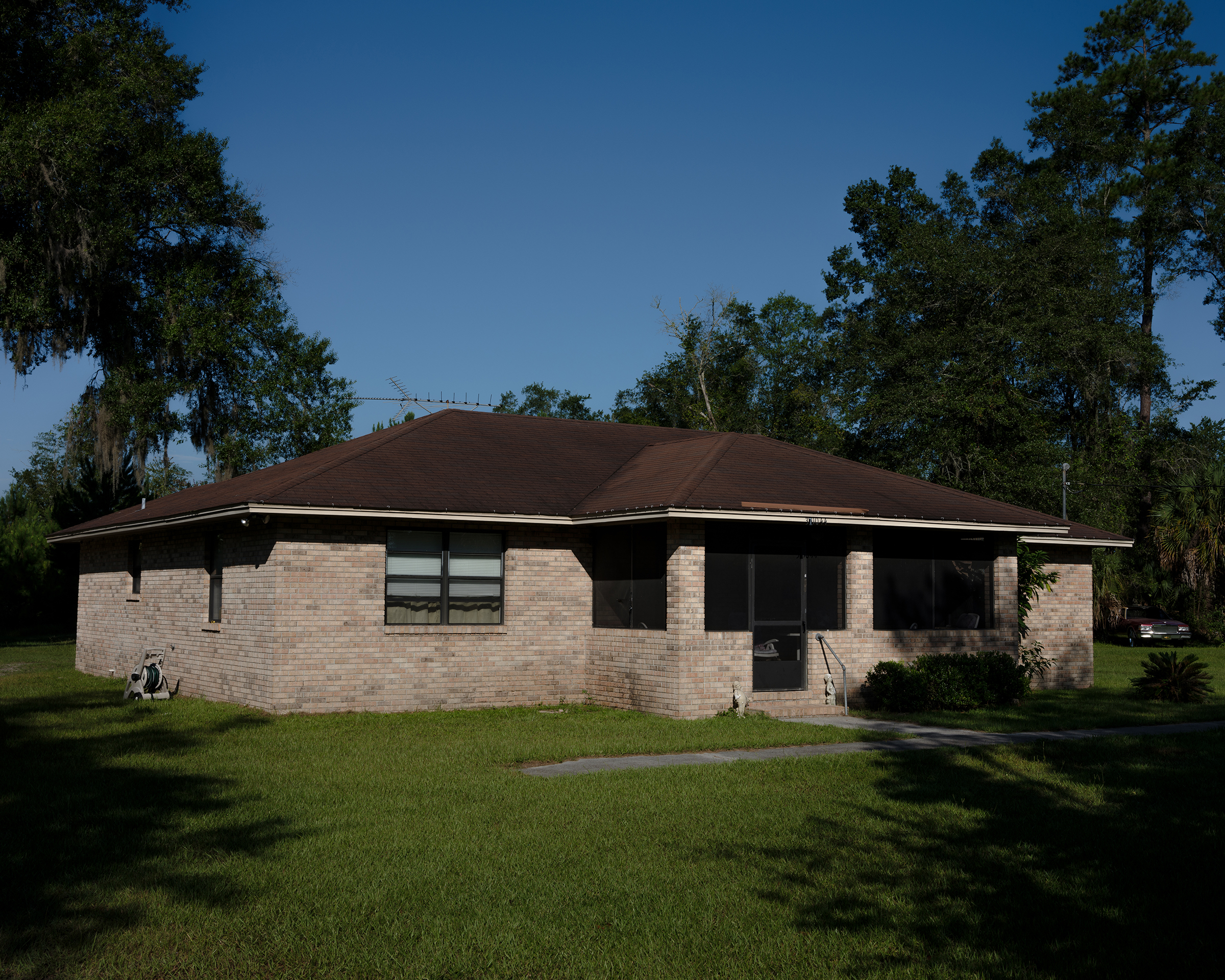
Last year, Hall’s two sons visited Rosewood for the first time. Every Black home erected before 1923 is gone, and only a weathered historical marker on the side of State Road 24 denotes what happened there. The former Hall land is privately owned. But from the road that abuts it, you can see an American flag draped across a wooden gate, taking proud ownership of a certain version of history.
Though Hall’s family no longer owns a piece of Rosewood, he still believes it’s important that his children know where they came from. “We can sit our kids down and explain to them how we came to live on this property,” he says. “It wasn’t just handed to us. Some people worked hard and sacrificed. There’s lessons involved in all of that.”
Luckerson is a journalist who writes a biweekly newsletter about neglected Black history called Run It Back at runitback.substack.com
More Must-Reads From TIME
- The 100 Most Influential People of 2024
- Coco Gauff Is Playing for Herself Now
- Scenes From Pro-Palestinian Encampments Across U.S. Universities
- 6 Compliments That Land Every Time
- If You're Dating Right Now , You're Brave: Column
- The AI That Could Heal a Divided Internet
- Fallout Is a Brilliant Model for the Future of Video Game Adaptations
- Want Weekly Recs on What to Watch, Read, and More? Sign Up for Worth Your Time
Contact us at letters@time.com
